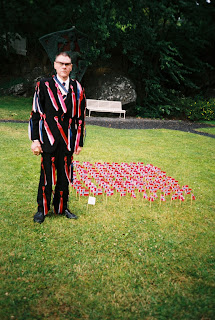The phrase was used by Pigmeat in his stand up comedy routine, performed on the Ed Sullivan Show in 1947. Sammy Davis Junior then used it, dressed in judge’s robes and a wig, on Rowan and Martin’s Laugh-In, 28.3.68, after which it was used as a catch phrase on the show, subsequently performed by Pigmeat himself, passing into popular usage, along with “That’s a no no” and "Very interesting - but stupid”, among others.
Pigmeat’s single was released July and August ‘68 in the US and UK respectively, reaching No 19 in both countries.
The best rap record of all time is of course The Revolution Will Not Be Televised...









